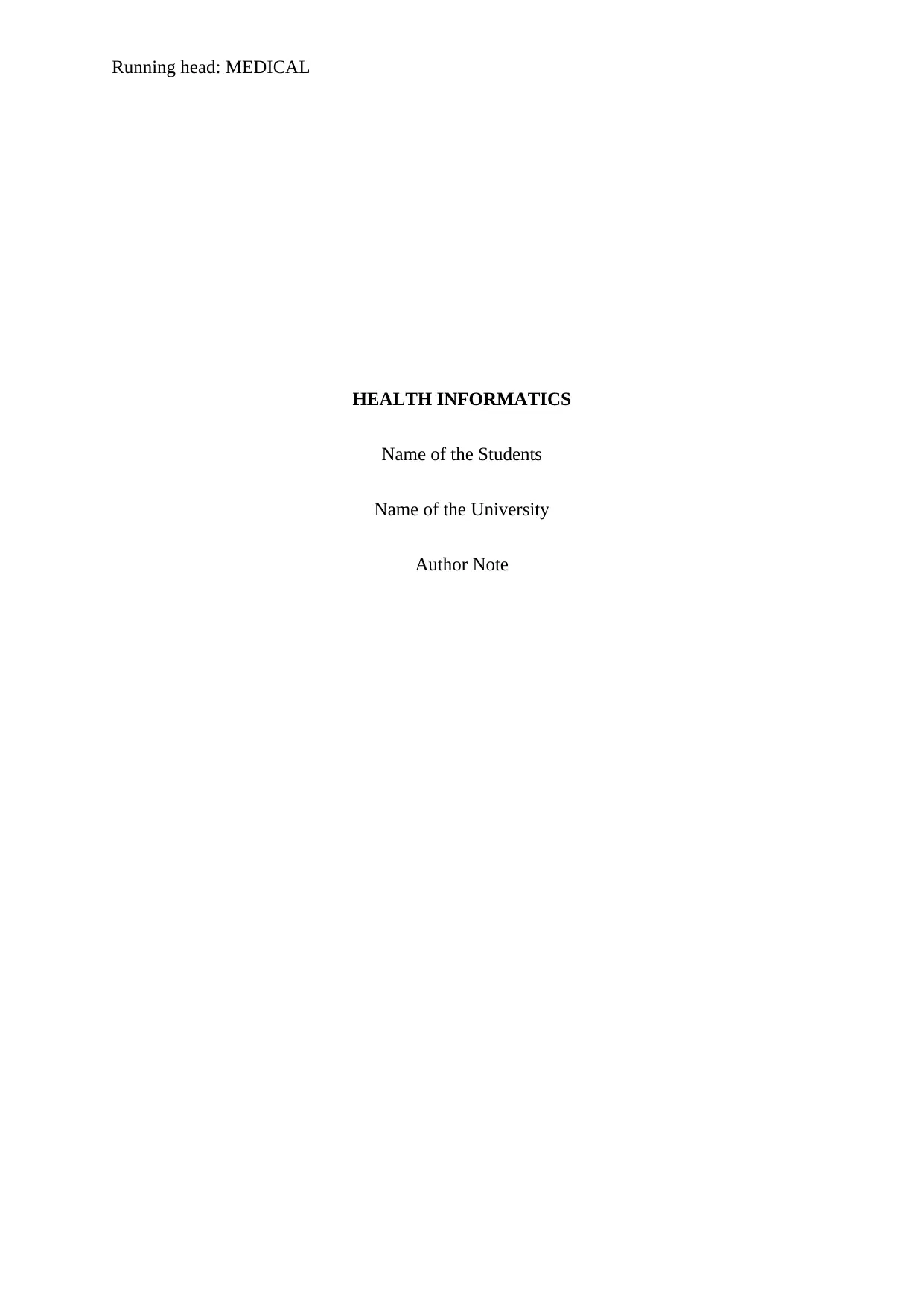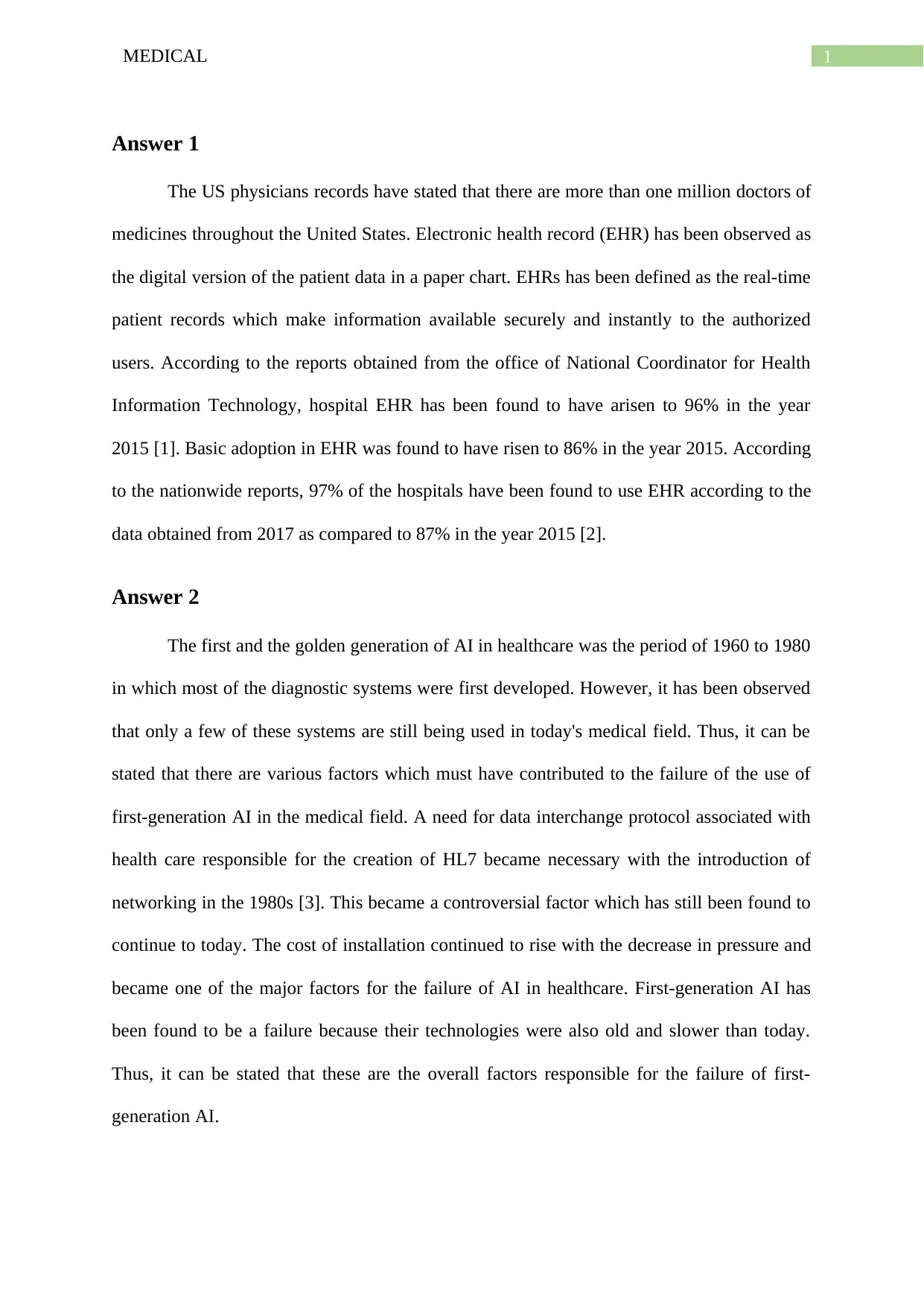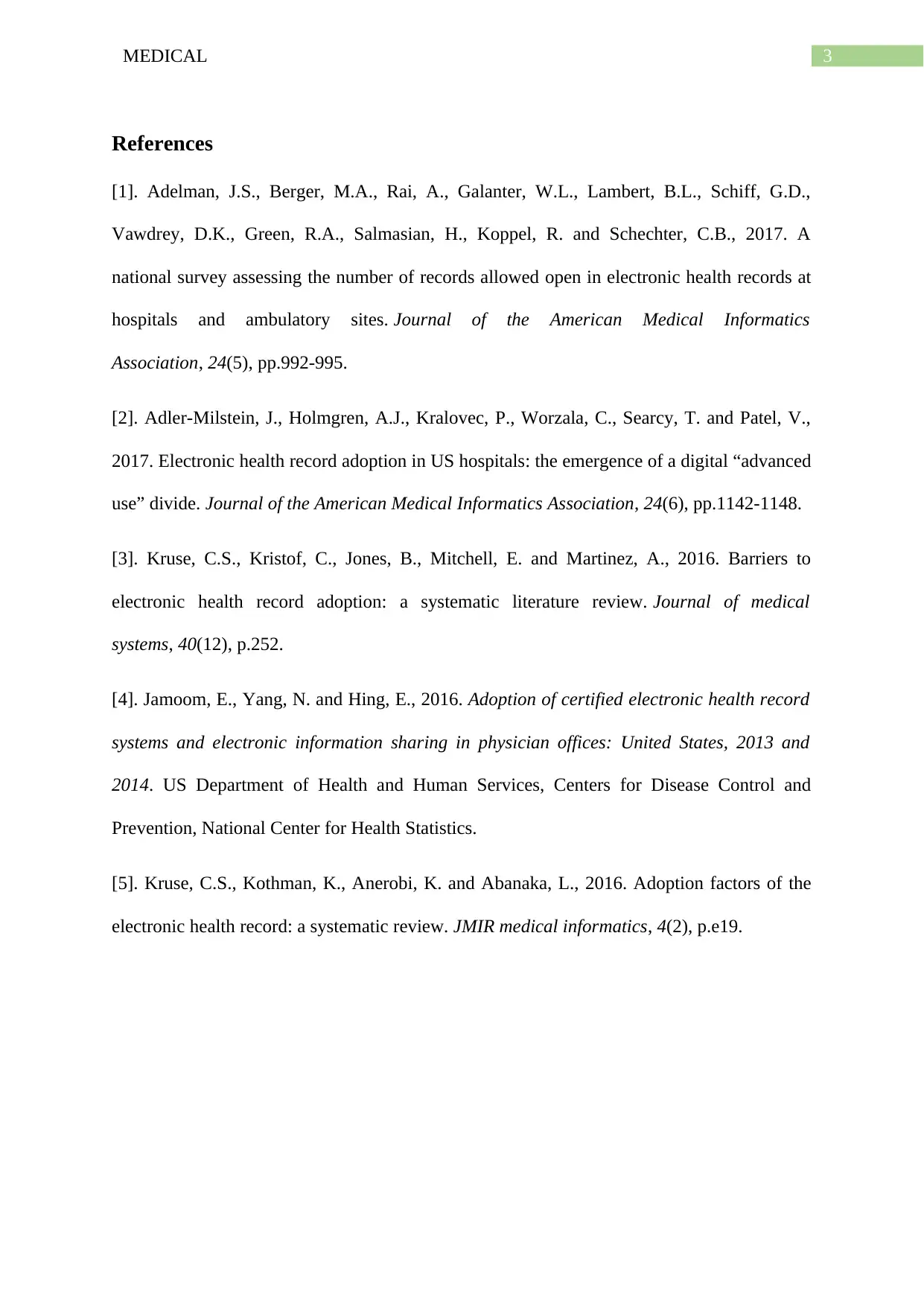CIS 555 Health Informatics: EHR Adoption, AI, and EMR Analysis
VerifiedAdded on 2022/08/25
|4
|840
|17
Homework Assignment
AI Summary
This assignment explores the adoption rates of Electronic Health Records (EHRs) in the United States, referencing statistics from 2015 and 2017 to illustrate the increasing trend. It then delves into the failures of first-generation Artificial Intelligence (AI) systems in healthcare, identifying factors such as data interchange protocol issues, high installation costs, and outdated technology as contributing to their limited use. The assignment also discusses the current state of EHR adoption worldwide, highlighting the increasing use of patient portals for accessing health information and the high percentage of hospitals utilizing EHR data. The solution provides multiple citations from peer-reviewed journals to support the findings and analysis, covering topics such as adoption rates, barriers to EHR adoption, and the evolution of health informatics.
1 out of 4











![[object Object]](/_next/static/media/star-bottom.7253800d.svg)